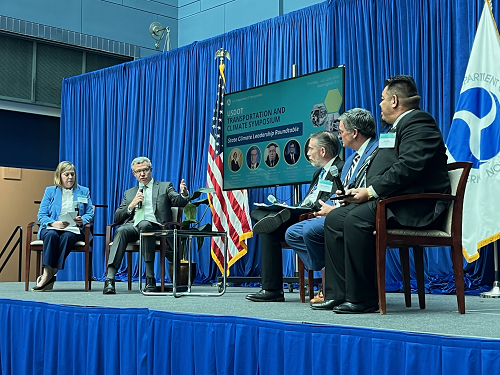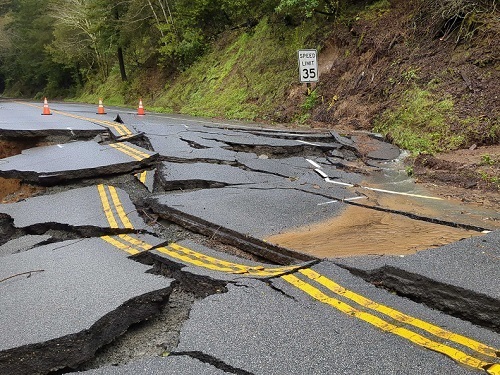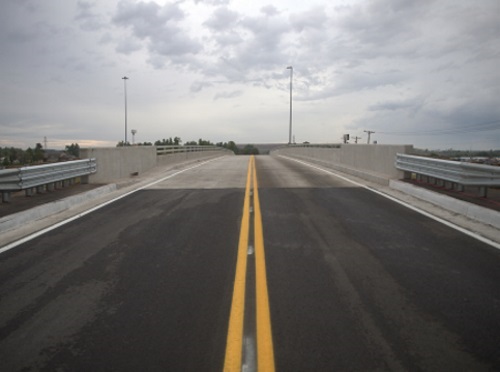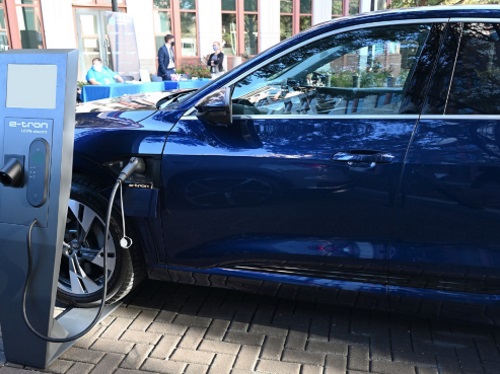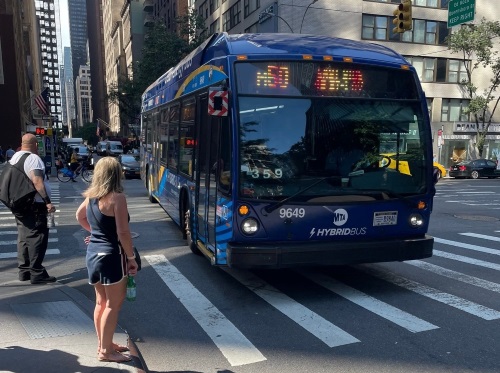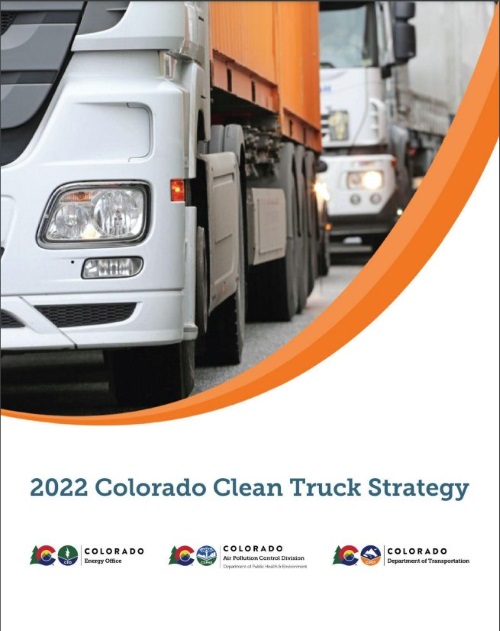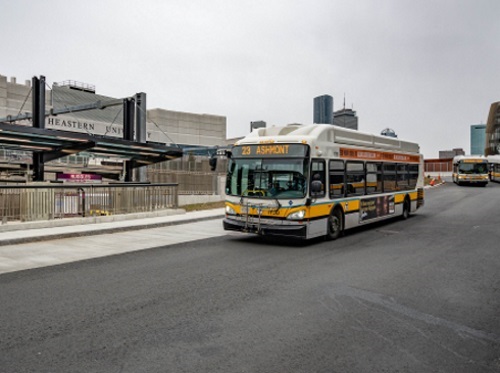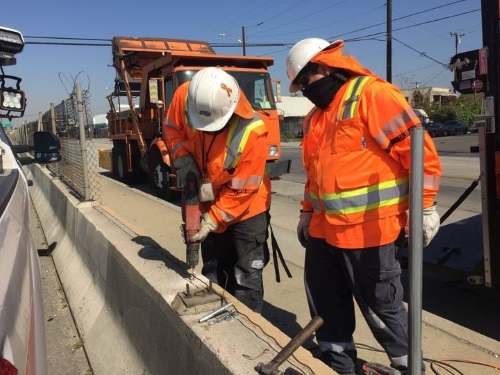Representatives of state departments of transportation discussed their environmental stewardship efforts during a special panel discussion at the Transportation and Climate Symposium hosted by the U.S. Department of Transportation at its Washington, D.C., headquarters July 11-12.
[Above photo by AASHTO]
That panel included Mike Carroll, secretary of the Pennsylvania Department of Transportation; Jim Tymon, executive director of the American Association of State Highway and Transportation Officials; Herman Stockinger, deputy executive director of the Colorado Department of Transportation; and Jerry Valdez, executive director of the Executive Projects Office within the New Mexico Department of Transportation.
“States in every part of the country are engaged in programs and projects to address the impact of climate change,” Tymon noted. That includes everything from the electrification of ferry boats and vehicle fleets to the development and deployment of “green” construction materials and flood warning systems for transportation infrastructure.
“The key is to provide states with flexibility,” Tymon explained. “Those efforts demonstrate that no single solution works in every place.”
He added that highlighting the successes states are achieving across a multitude of different environmental initiatives is what will convince more to adopt them as well. “Telling those success stories – sharing that information – is what will help bring others along and get them to the table.”
PennDOT’s Carroll echoed that sentiment in his remarks. “We are seldom at front of the line of change – but the reality is we must be,” he stressed. “The reality is that we are the most flood-prone state in the nation – and that demands our attention.”
So when it comes to engaging in infrastructure efforts to curb the impact of flooding, Carroll said his agency is taking the time to educate its partners at the local and county level along the way. “Many are not eager to deal with climate change,” he noted. “That is why we make sure to work with them to bring them along from where they are to where they need to be. It is incumbent upon us to work with them.”
Colorado DOT’s Stockinger added that such efforts are not just about complying with environmental regulations – they are focused on the adoption of more forward-looking mitigation measures where transportation infrastructure is concerned.
“It is about integrating land use, housing, reducing VMT [vehicles miles traveled], and cutting GHGs [greenhouse gases] – it’s a multifaceted approach,” he said. “It is about delivering projects the right way, with a multimodal focus.”
It’s also about focusing more on the people affected by transportation projects than the projects themselves, added NMDOT’s Valdez.
“Every one of us is in the people business; we need to think about generations to come,” he said. “We must listen to the voice of our constituents – they have the right to ask tough questions and we must educate them about the issues. There is a lot of anxiety with climate change happening right before our eyes. Dealing with that requires robust public engagement – as well as us working with our other state agencies in partnership as well. It is about listening to individuals in their communities to ensure their voices are heard.”
PennDOT’s Carroll emphasized Valdez’s point, noting that the “real focus” on transportation infrastructure going forward is on community engagement. “This is not overly complicated, but nuances are significant when it comes to infrastructure’s impact on them. We also really need to recognize equity needs when we engage with community as well.”
Colorado DOT’s Stockinger explained that the “equity needs” of community engagement includes providing bilingual staff and day care at public meeting. “It’s a reminder we must not just ‘check the box’ when it comes to public engagement – efforts like those are part of really addressing their concerns.”
That shows how state DOTs are shifting their approach public engagement nationwide, noted AASHTO’s Tymon – all part of the climate mitigation strategies state DOTs are using.
“It shows how state DOTs are being flexible and creative in how they reach out to the public – communicating to those affected at all levels by a project,” he said. “For example, providing day care at public meetings was not the baseline for state DOTs 10 years ago. Many are also giving the public opportunities to provide their input virtually versus in-person meetings. That helps them buy into the process more. It’s all part of how land use and housing plays a part in what we do from a transportation network perspective. It is about making sure there are more modal options for all members of the communities served by state DOTs; active transportation and transit options; taking a multimodal approach to help us achieve national transportation decarbonization goals.”

